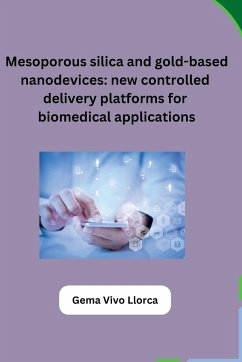Tiny Tech for Targeted Treatment: Mesoporous Silica and Gold Nanoparticles in Biomedicine Imagine microscopic delivery vehicles carrying potent drugs directly to diseased cells, minimizing harm to healthy tissue. This exciting field is explored in "Mesoporous Silica and Gold-Based Nanodevices: New Controlled Delivery Platforms for Biomedical Applications." This doctoral thesis delves into the design and application of innovative nanomaterials for targeted drug delivery, particularly in the fight against breast cancer. The thesis focuses on two promising nanomaterials: mesoporous silica and gold nanoparticles. Mesoporous silica boasts a sponge-like structure, ideal for encapsulating drugs and releasing them in a controlled manner. Gold nanoparticles, on the other hand, offer unique properties like biocompatibility and the ability to attach targeting molecules, guiding the nanodevice to specific cells. By combining these materials, researchers create "hybrid nanodevices" with remarkable abilities. One example involves a nanodevice loaded with two anti-cancer drugs and equipped with a "molecular gate" that unlocks only upon reaching cancer cells. This targeted approach promises to overcome drug resistance and reduce side effects. Another exciting application involves a pH-responsive nanodevice designed for gene editing. This tiny carrier delivers the CRISPR/Cas9 gene editing machinery directly to diseased cells, offering a potential future for gene therapy.
Hinweis: Dieser Artikel kann nur an eine deutsche Lieferadresse ausgeliefert werden.
Hinweis: Dieser Artikel kann nur an eine deutsche Lieferadresse ausgeliefert werden.








